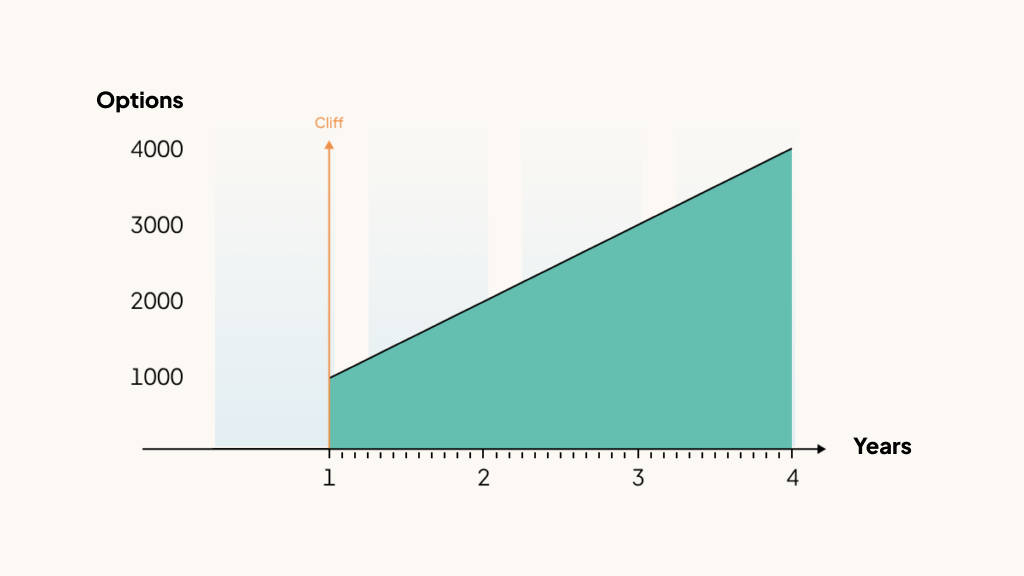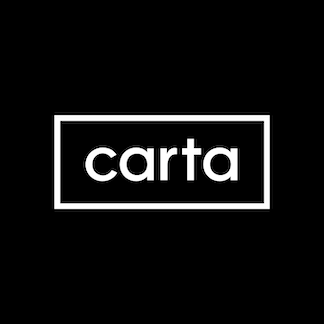When an employer gives you equity as part of your compensation package, they’re offering you partial ownership of the company. However, your equity grant usually has to vest first, meaning that you typically need to work for the company for a certain period of time before you can become a shareholder.
What is vesting?
Vesting is the process of earning an asset, such as share options or restricted stock units (RSUs), over time. Companies often use vesting to encourage employees to stay with the business for longer. Unless your company allows early exercising, you can only exercise vested options within a specified period – known as the “exercise window”.
Vesting share options
If you’re granted share options, you don’t receive actual company shares – at least not yet. Instead, the company is granting you the right to exercise your options and turn them into shares once certain conditions are met. Essentially, an option grant represents the right to buy a set number of shares at a fixed price later on.
Vesting RSUs
If your company issues restricted stock units (RSUs), you’ll receive actual shares that you might be able to sell in the future. Unlike share options, you don’t have to purchase (or exercise) RSUs to own them – you just need to wait for them to vest. RSU vesting may depend on your tenure as an employee; in some cases, you or the company must also hit a stated milestone, such as an initial public offering (IPO).
What is a vesting schedule?
A vesting schedule shows when you’ll earn your options or shares. It’s typically defined in your grant agreement (e.g. 1000 options will vest in equal tranches over four years).
There are three common types of vesting schedule: time-based, milestone-based and a combination of both.
Time-based vesting and the vesting cliff
Time-based vesting is when you earn options or shares over a set period of time.
Most time-based vesting schedules have a vesting cliff. With cliff vesting, the first portion of your equity award vests on a specific date; once you’ve passed the cliff, the remaining options or shares gradually vest over the following months or quarters.
Many companies offer share option grants with a one-year cliff to motivate employees to stay for at least a year. If you leave the company before then, any of your unvested options return to the employee option pool.
Under a standard four-year time-based vesting schedule with a one-year cliff, 1/4 of your options vest after the first year. Once you’ve reached the cliff, 1/36 of the remaining options (or 1/48 of the original grant) vest each month until the end of the vesting period.

Note that vesting isn’t necessarily based on your overall tenure at the company, because each option grant has its own vesting schedule. For example, if you received one grant with a four-year vesting schedule in 2020 and another grant with a four-year vesting schedule from the same company in 2022, all of the options from both grants wouldn’t be fully vested until 2026.
Milestone-based vesting
Options or shares that are subject to performance-based (or event-based) vesting conditions can only be earned after a specific milestone has been met. Examples of milestones include an IPO, reaching a revenue goal, completing a project or hitting a certain valuation. Milestone-based vesting is less common than time-based vesting.
Hybrid vesting
Hybrid vesting is a combination of time-based and milestone-based vesting. This model requires you to work at the company for a certain amount of time and hit one or more milestones to receive your options or shares. In the case of an RSU grant, hybrid vesting is sometimes known as “ double-trigger vesting”.
Vesting schedule example
Meetly, Inc. (a hypothetical company) hired Blake on 1 January 2020. As part of his compensation package, Meetly gave Blake an option grant with the following details:
-
Grant date: 01/01/2020
-
Options granted: 192
-
Vesting schedule: Time-based; monthly for four years with a one-year cliff
On 1 January 2021, one year after her hire date, Blake reached the vesting cliff and 1/4 of her option grant (192/4 = 48 options) vested.
|
Date |
Options vested |
Cumulative |
|
01/01/2021 |
48 |
48 |
|
01/02/2021 |
4 |
52 |
|
01/03/2021 |
4 |
56 |
|
01/04/2021 |
4 |
60 |
|
01/05/2021 |
4 |
64 |
|
01/06/2021 |
4 |
68 |
|
01/07/2021 |
4 |
71 |
|
01/08/2021 |
4 |
76 |
|
01/09/2021 |
4 |
80 |
Over the next three years, an additional four options vest every month. By 1 January 2024, Blake’s options will be fully vested However, she can only exercise her vested options (and turn them into actual shares) within the exercise window stated in her grant agreement.
|
Date |
Options vested |
Cumulative |
|
01/01/2021 |
48 |
48 |
|
01/01/2022 |
48 |
96 |
|
01/01/2023 |
48 |
144 |
|
01/01/2024 |
48 |
192 |
If Blake leaves the company before 1 January 2024, she will lose any unvested options, which will return to the company’s option pool.
Understanding your equity grant
Have you recently received equity but don’t know where to start? Check out this share options guide to learn about strike prices, option pools and other equity concepts that affect startup founders and employees.




